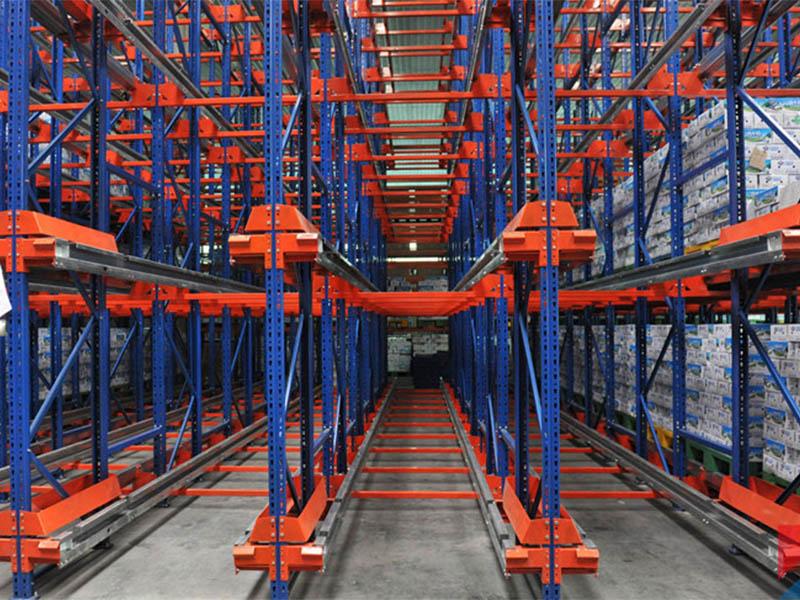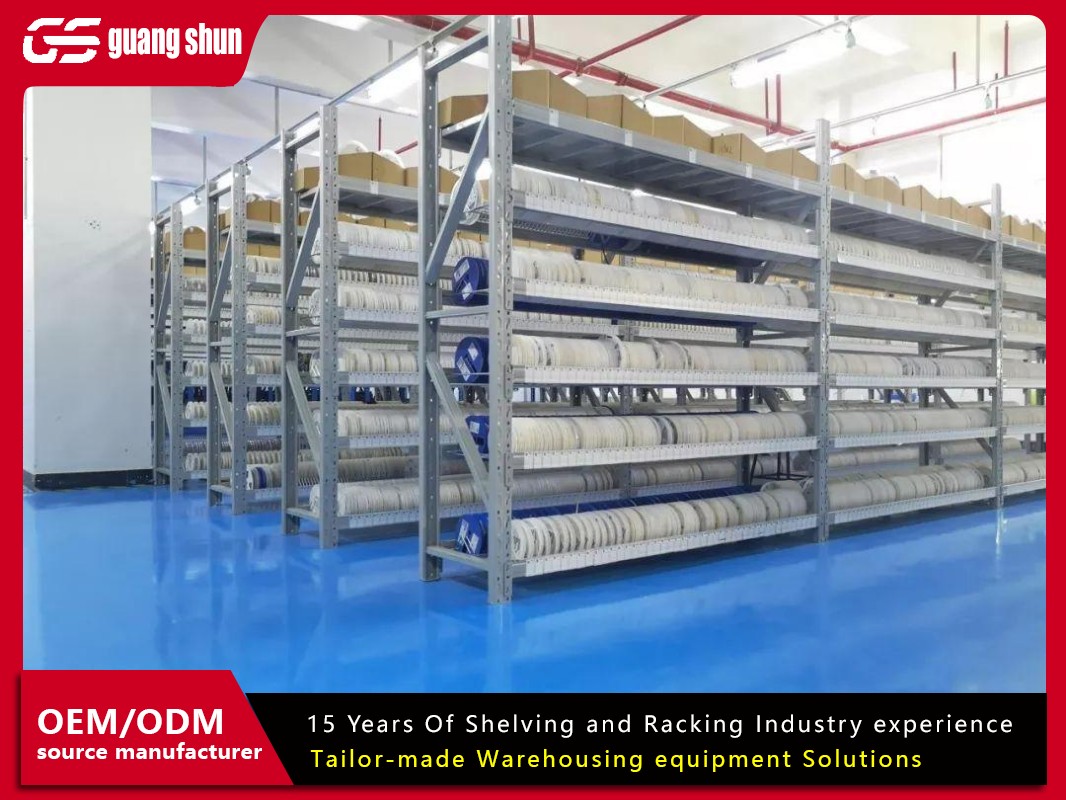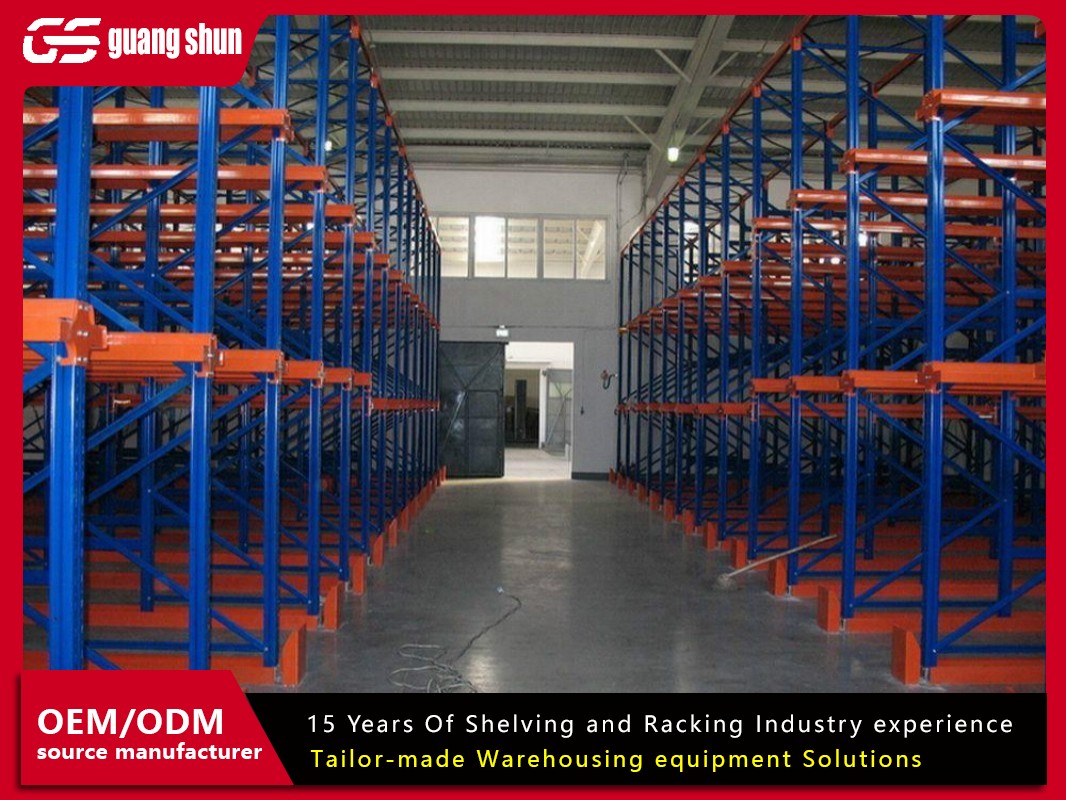In today's fast-paced logistics, manufacturing, and retail environments, maximizing space utilization and minimizing retrieval times are paramount. Enter automated shelving systems, sophisticated technological solutions transforming how businesses store, manage, and access inventory. Moving far beyond static racks, these systems leverage robotics, software intelligence, and advanced mechanics to create dynamic, high-density storage environments. This article delves deep into the world of automated shelving systems, exploring their core technologies, operational mechanics, benefits, implementation considerations, diverse applications, and future trajectory.

1. Core Components and Technology: The Anatomy of Automation
At the heart of any automated shelving system lies a sophisticated integration of hardware and software components working in concert:
•The Storage Structure: This is the physical framework, typically consisting of very tall, high-bay racking constructed from durable steel. Unlike traditional shelving, aisles are extremely narrow or often completely eliminated, as human access isn't required. The structure is designed for maximum vertical space utilization, often reaching warehouse ceiling heights. Bins, totes, pallets, or trays reside on shelves within this structure.
•The Robotic Retrieval Mechanism: This is the "muscle" of the system. Common types include:Cranes/Shuttles: For pallet-based or large-item storage (Unit Load AS/RS), overhead cranes travel on rails within aisles, moving vertically and horizontally to access specific locations. Mini-load systems use smaller, faster cranes or shuttles to handle bins or totes. Shuttle systems often involve vehicles operating on each level of the racking.Robotic Arms: Used in some systems, particularly for case picking or handling irregular items, integrated with conveyor systems.
•The Conveyance System: Once retrieved, items need to be transported to the workstation or pick face. This involves a network of conveyors (belt, roller, chain), lifts, and transfer cars that seamlessly move inventory from the storage area to the operator or integration point.
•The Control System: The Brain: This is the central nervous system, comprising sophisticated Warehouse Control Software (WCS) and often integrating with higher-level Warehouse Management Systems (WMS) or Enterprise Resource Planning (ERP) software. It manages:Real-time inventory location tracking.Optimizing storage placement based on predefined rules (e.g., velocity, weight, size).Sequencing and prioritizing retrieval and storage commands.Directing the movement of cranes, shuttles, and conveyors.Providing system diagnostics and performance monitoring.
•Workstations: Points where operators interact with the system for tasks like order picking (goods-to-person), replenishment, induction of new items, or quality control. These are ergonomically designed for efficiency.
•Sensors and Safety Systems: A critical network of photo-eyes, barcode/RFID readers, limit switches, laser scanners, and safety barriers ensures precise positioning, accurate inventory tracking, and safe operation for both equipment and personnel.
2. Operational Mechanics: How Automated Shelving Systems Work
The magic of automated shelving systems lies in their seamless workflow:
1.Induction: Items arrive at the system. Operators or automated systems scan barcodes/RFID tags at induction stations. The WCS identifies the item and determines the optimal storage location within the dense automated shelving system based on configurable algorithms (e.g., fastest-moving items placed closest to workstations, grouping similar items, maximizing space).
2.Storage Command: The WCS sends instructions to the retrieval mechanism (crane/shuttle). The mechanism travels to the designated empty location within the high-bay structure, retrieves the storage bin/tray if needed (for putaway), or positions itself to receive the item. Conveyance systems transport the item to the storage aisle entrance.
3.Automated Placement: The retrieval mechanism precisely places the item (or the bin containing it) onto the designated shelf location within the automated shelving system. Inventory records are instantly updated in the WMS/WCS.
4.Retrieval Command: When an order is received, the WCS identifies the required items' locations. It intelligently sequences retrieval requests to minimize travel time for the cranes/shuttles (e.g., retrieving multiple items for the same order in one trip, or batch picking).
5.Automated Retrieval: The designated retrieval mechanism travels to the exact location, extracts the required bin, tray, or pallet, and places it onto the integrated conveyor system.
6.Delivery to Operator: The conveyance system transports the retrieved items directly to a designated workstation. In a "Goods-to-Person" (GTP) model, the operator remains stationary, significantly increasing pick rates and reducing walking time/errors. The operator picks the required quantity, and the system may automatically return the bin or route it for replenishment.
7.Order Consolidation & Dispatch: Picked items are consolidated, packed, labeled, and prepared for shipping, often with further automation integrated into this stage.

3. Tangible Benefits: The Value Proposition of Automation
Implementing automated shelving systems delivers a compelling array of advantages:
•Dramatically Increased Storage Density: By eliminating aisles and utilizing full ceiling height, these systems can often store 2-5 times more inventory in the same floor space compared to conventional shelving. This is crucial in high-rent areas or constrained facilities.
•Significantly Enhanced Accuracy: Barcode/RFID scanning at multiple points (induction, retrieval, picking) combined with software control virtually eliminates manual picking and putaway errors, leading to near-perfect inventory accuracy (often 99.9%+).
•Boosted Productivity and Throughput: Automation operates 24/7 without fatigue. Retrieval speeds are much faster than manual searching. The GTP model drastically reduces operator travel time, often increasing pick rates by 300-600% or more. Systems can handle peak demands efficiently.
•Reduced Labor Costs & Improved Ergonomics: While requiring skilled technicians for maintenance, automated shelving systems significantly reduce the need for manual pickers and forklift operators. They also eliminate physically demanding tasks like climbing ladders, lifting heavy items from heights, and pushing carts, improving workplace safety and comfort.
•Optimized Inventory Management: Real-time, item-level tracking provides unparalleled visibility. The WCS can enforce strict First-In-First-Out (FIFO) or other rotation policies. Stock location and levels are always current.
•Enhanced Security and Traceability: Controlled access to the storage area and detailed electronic logs provide superior inventory security. Full traceability of every item movement is available for audits, recalls, or process analysis.
•Scalability and Flexibility: Many modern automated shelving systems are modular, allowing capacity and throughput to be scaled up relatively easily as business needs grow. Software can adapt to changing inventory profiles and order patterns.
4. Implementation Considerations: Planning for Success
Deploying automated shelving systems is a significant investment requiring careful planning:
•Thorough Needs Analysis: A deep dive into current and projected inventory profiles (SKU count, dimensions, weight, turnover rates), order volumes, peak demands, and existing processes is essential. This defines the system's required capacity and performance specifications.
•Site Evaluation & Preparation: The facility must be evaluated for ceiling height, floor load capacity, column spacing, and access points. Significant structural modifications (floor leveling, reinforcing) and environmental controls (dust, temperature for sensitive electronics) may be necessary. Adequate space for workstations, staging, and conveyance integration is critical.
•Choosing the Right System Type: Selecting between unit load (pallets), mini-load (bins/totes), shuttle-based, or robotic systems depends entirely on the nature of the goods, handling requirements, and throughput needs. Hybrid solutions are also common.
•Software Integration: Seamless integration between the automated shelving system's WCS and the company's existing WMS/ERP is non-negotiable for smooth data flow and operational control. This requires careful planning and expertise.
•Total Cost of Ownership (TCO): Beyond the initial hardware/software investment, factor in installation, facility modifications, integration costs, ongoing maintenance contracts, energy consumption, and potential operational disruption during implementation. Calculate ROI based on labor savings, space savings, improved accuracy, and increased throughput.
•Vendor Selection & Partnership: Choosing an experienced, reputable vendor with a strong track record in similar applications is crucial. Look for robust support, maintenance services, and system reliability. Consider future upgrade paths.
•Change Management: Transitioning to an automated environment requires significant changes in workflows and staff roles. Comprehensive training and clear communication are vital for user adoption and maximizing system benefits.
5. Diverse Applications Across Industries
Automated shelving systems are not a one-size-fits-all solution but excel in specific environments:
•E-commerce & Retail Fulfillment: Handling vast numbers of small, diverse SKUs with high order volumes and demanding SLAs. GTP picking is transformative here. Automated shelving systems are the backbone of many mega-fulfillment centers.
•Manufacturing: Storing and sequencing raw materials, work-in-progress (WIP), and finished goods efficiently for Just-in-Time (JIT) production lines. Kanban replenishment is often automated.
•Cold Storage & Pharmaceuticals: Operating efficiently in freezer/cooler environments where manual labor is difficult and expensive. Maintaining precise temperature control and strict inventory control for compliance (e.g., FDA, GDP). Automated shelving systems minimize the time storage areas are exposed to warmer air.
•Apparel & Fashion: Managing a huge variety of sizes, colors, and styles efficiently, crucial for handling seasonal peaks and fast-fashion turnover.
•Spare Parts Logistics (MRO): Providing rapid, accurate access to thousands of often critical spare parts for maintenance operations in industries like aerospace, automotive, and energy.
•Libraries and Archives: Storing and retrieving books, documents, and media efficiently in high-density configurations, preserving fragile materials by minimizing handling.
•Groceries & Food Distribution: Handling perishables with strict FIFO requirements and diverse product types, often integrated with case-picking automation.
The Future of Automated Shelving Systems
The evolution of automated shelving systems continues rapidly, driven by advancements in:
•Artificial Intelligence (AI) and Machine Learning (ML): For even more sophisticated storage optimization, predictive maintenance (anticipating component failures), dynamic order sequencing, and demand forecasting integration.
•Advanced Robotics: More dexterous, mobile, and collaborative robots (cobots) will handle increasingly complex items and integrate more fluidly within automated shelving system workflows.
•IoT (Internet of Things): Greater sensorization for real-time health monitoring of every system component, enabling data-driven optimization and proactive maintenance.
•Energy Efficiency: Developments in motor technology, regenerative drives, and intelligent power management to reduce the significant energy footprint of large systems.
•Modularity and Scalability: Easier-to-deploy and expand systems, potentially using more standardized components and plug-and-play architectures.
•Enhanced Goods-to-Person Technologies: Integration with automated sortation, putwalls, and packing stations to create fully automated end-to-end fulfillment cells.
Automated shelving systems represent a quantum leap in warehouse and storage technology. By intelligently combining high-density storage, robotic retrieval, sophisticated software, and seamless conveyance, they solve critical challenges of space constraints, labor shortages, accuracy demands, and speed requirements faced by modern businesses. While the initial investment and implementation complexity are substantial, the long-term returns in terms of efficiency, accuracy, space savings, and operational scalability are compelling and often essential for maintaining competitiveness. As technology continues to advance, making these systems smarter, more flexible, and more accessible, their adoption is set to accelerate further, fundamentally reshaping the landscape of logistics and inventory management across virtually every sector. Investing in understanding and potentially implementing automated shelving systems is no longer just an option for industry leaders; it's becoming a strategic imperative for sustainable growth.







